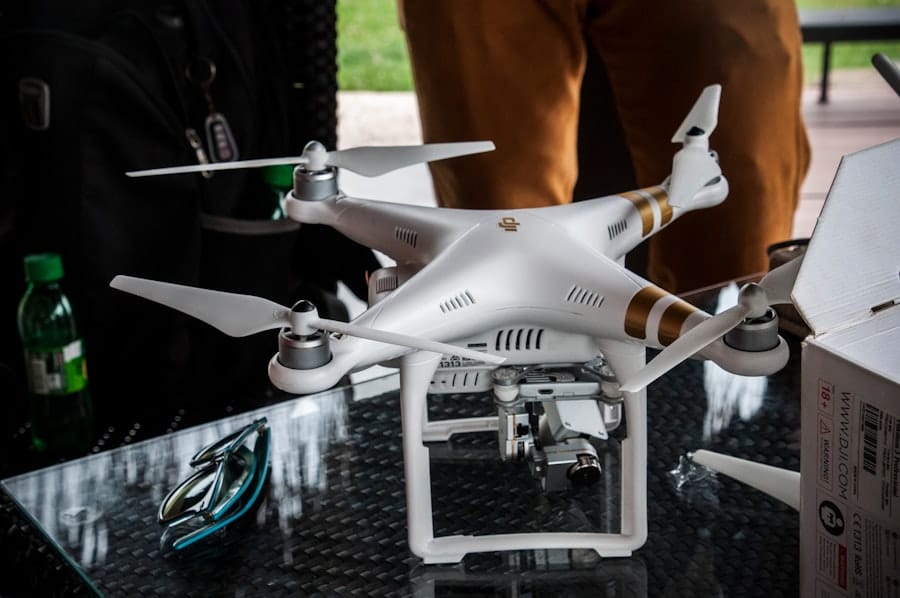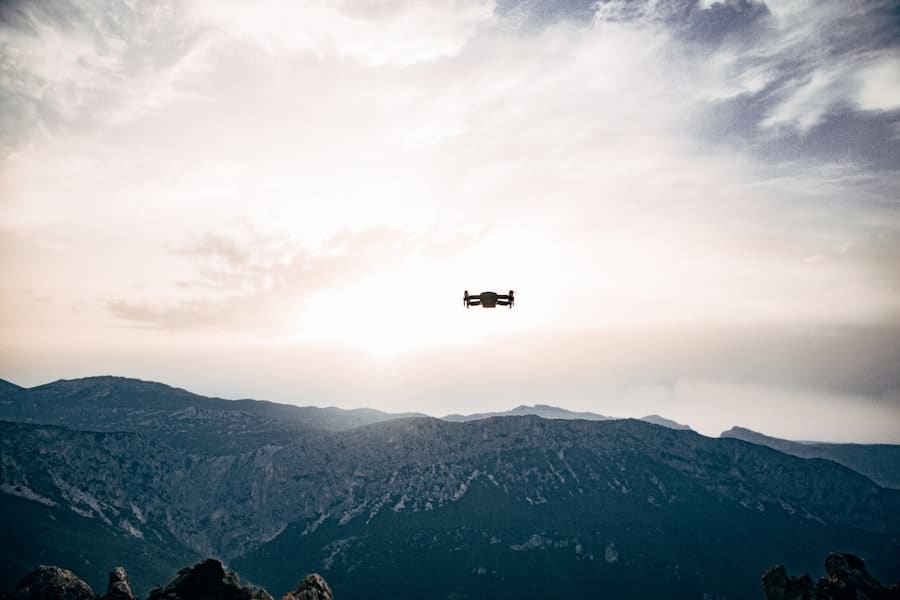Last-mile delivery logistics refers to the final step in the supply chain, where goods are transported from a distribution center to the end consumer. This segment of logistics is often the most complex and costly, accounting for a significant portion of total shipping expenses. The rise of e-commerce has intensified the demand for efficient last-mile delivery solutions, as consumers increasingly expect rapid and reliable service.
Traditional methods, such as delivery trucks and couriers, face challenges including traffic congestion, rising fuel costs, and the need for timely deliveries in urban environments.
Drones, or unmanned aerial vehicles (UAVs), offer a unique approach to last-mile delivery by bypassing ground traffic and directly reaching consumers’ doorsteps.
Their ability to navigate through urban landscapes and deliver packages quickly has garnered significant interest from logistics companies, retailers, and technology developers alike. As the logistics industry seeks to enhance efficiency and reduce costs, the integration of drones into last-mile delivery systems presents a promising avenue for transformation.
Key Takeaways
- Drones are revolutionizing last-mile delivery logistics by offering faster and more efficient delivery options.
- Advancements in drone technology, such as increased payload capacity and longer flight times, are making them more suitable for last-mile delivery.
- Challenges and regulations, including air traffic management and privacy concerns, are key barriers to implementing drones for last-mile delivery.
- Drones in last-mile delivery have the potential to reduce carbon emissions and lower delivery costs, but they also pose risks such as theft and accidents.
- Integrating drones with existing last-mile delivery systems can optimize delivery routes and improve overall efficiency.
Advancements in Drone Technology for Last-Mile Delivery
The evolution of drone technology has been remarkable over the past decade, driven by advancements in battery life, navigation systems, and payload capacities. Modern drones are equipped with sophisticated sensors and GPS technology that enable precise navigation and obstacle avoidance. This capability is crucial for last-mile delivery, where drones must maneuver through complex urban environments filled with buildings, trees, and other potential hazards.
For instance, companies like Zipline have successfully deployed drones in remote areas to deliver medical supplies, showcasing their ability to operate in challenging conditions. Battery technology has also seen significant improvements, allowing drones to fly longer distances without needing frequent recharges. Lithium polymer batteries, which are lightweight and have high energy density, have become standard in many commercial drones.
This advancement not only extends the operational range of drones but also enhances their efficiency in making multiple deliveries in a single flight. Furthermore, innovations in drone design, such as vertical takeoff and landing (VTOL) capabilities, enable them to operate in confined spaces without requiring extensive infrastructure. These technological advancements collectively enhance the feasibility of using drones for last-mile delivery.
Challenges and Regulations in Implementing Drones for Last-Mile Delivery

Despite the promising potential of drones in last-mile delivery logistics, several challenges must be addressed before widespread implementation can occur. One of the primary concerns is regulatory compliance. Aviation authorities around the world have established strict regulations governing drone operations to ensure safety and mitigate risks associated with flying UAVs in populated areas.
In the United States, for example, the Federal Aviation Administration (FAA) has set forth guidelines that require drone operators to obtain licenses, adhere to altitude restrictions, and maintain visual line-of-sight during flights. These regulations can pose significant hurdles for companies looking to deploy drones for commercial purposes. In addition to regulatory challenges, there are technical obstacles that need to be overcome.
Drones must be equipped with advanced technologies to handle various weather conditions and ensure reliable performance. For instance, rain or high winds can significantly impact a drone’s ability to fly safely and accurately deliver packages. Moreover, issues related to cybersecurity must be addressed, as drones are vulnerable to hacking and interference that could compromise their operations.
Environmental and Economic Impact of Drones in Last-Mile Delivery
The environmental implications of using drones for last-mile delivery are a topic of considerable interest among researchers and policymakers. Drones have the potential to reduce carbon emissions associated with traditional delivery methods by minimizing reliance on fossil fuel-powered vehicles. For instance, a study conducted by the University of California found that electric drones could significantly lower greenhouse gas emissions compared to conventional delivery trucks, particularly in urban areas where traffic congestion is prevalent.
By utilizing renewable energy sources for charging, the environmental benefits could be further amplified. Economically, the adoption of drones in last-mile delivery could lead to substantial cost savings for logistics companies. Drones can operate at lower costs than traditional delivery vehicles due to reduced fuel consumption and lower labor expenses.
Additionally, they can enhance operational efficiency by decreasing delivery times and increasing the number of packages delivered per hour. Companies like Amazon have already begun exploring drone delivery as a means to streamline their logistics operations and improve customer satisfaction. However, it is essential to consider the economic implications for workers in the logistics sector; as automation increases, there may be job displacement concerns that need to be addressed through retraining programs or new employment opportunities.
Integration of Drones with Existing Last-Mile Delivery Systems
Integrating drones into existing last-mile delivery systems presents both opportunities and challenges for logistics providers. A hybrid approach that combines traditional delivery methods with drone technology could optimize efficiency while maintaining service reliability. For example, drones could be used for initial deliveries from distribution centers to local hubs or drop-off points, where human couriers would then complete the final leg of the journey to consumers’ homes.
This model leverages the strengths of both drones and traditional delivery methods while addressing some of the limitations associated with each. Moreover, successful integration requires collaboration among various stakeholders within the logistics ecosystem. Companies must work closely with regulatory bodies to ensure compliance with aviation laws while also engaging with local communities to address concerns about noise pollution and safety.
Additionally, investments in infrastructure—such as designated drone landing zones or charging stations—will be necessary to facilitate seamless operations. By fostering partnerships between technology developers, logistics providers, and regulatory agencies, a more cohesive framework for drone integration can be established.
Future Trends and Innovations in Last-Mile Delivery Logistics with Drones

As technology continues to evolve, several trends are likely to shape the future of last-mile delivery logistics involving drones. One notable trend is the increasing use of artificial intelligence (AI) and machine learning algorithms to optimize drone flight paths and delivery schedules. By analyzing real-time data on traffic patterns, weather conditions, and consumer demand, AI can enhance route planning and improve overall efficiency.
This capability will be particularly valuable in urban environments where dynamic conditions can impact delivery times. Another emerging trend is the development of autonomous drone fleets capable of operating without human intervention. Companies like Wing Aviation are already testing fully autonomous drone deliveries in select markets.
These fleets can communicate with one another to coordinate deliveries and avoid collisions while maximizing operational efficiency. As advancements in AI and robotics continue to progress, we may see a future where drones operate seamlessly alongside other forms of transportation within smart cities.
Potential Benefits and Risks of Using Drones for Last-Mile Delivery
The potential benefits of using drones for last-mile delivery are numerous and compelling. One significant advantage is speed; drones can deliver packages within minutes rather than hours or days, particularly in urban areas where traffic congestion can delay traditional vehicles. This rapid service can enhance customer satisfaction and loyalty while providing businesses with a competitive edge in an increasingly crowded marketplace.
However, alongside these benefits come inherent risks that must be carefully managed. Safety concerns are paramount; incidents involving drone malfunctions or accidents could pose serious risks to public safety. Additionally, privacy issues arise as drones equipped with cameras may inadvertently capture images or data from private properties during their flights.
Addressing these risks requires robust safety protocols, transparent operational practices, and ongoing dialogue with communities affected by drone operations.
The Role of Drones in Shaping the Future of Last-Mile Delivery Logistics
Drones are poised to play a transformative role in shaping the future of last-mile delivery logistics by offering innovative solutions that address existing challenges within the industry. As advancements in technology continue to unfold, the potential for drones to enhance efficiency while reducing environmental impact becomes increasingly apparent. However, realizing this potential will require careful consideration of regulatory frameworks, safety protocols, and community engagement strategies.
The integration of drones into last-mile delivery systems represents not just a technological shift but also a fundamental change in how goods are transported from warehouses to consumers’ doorsteps. As companies navigate this evolving landscape, they must remain vigilant about balancing innovation with responsibility—ensuring that the benefits of drone technology are realized while mitigating associated risks. Ultimately, the successful implementation of drones in last-mile delivery logistics could redefine consumer expectations and set new standards for efficiency in an ever-changing marketplace.
In a recent article on the best laptops for gaming, the importance of high-performance technology in various industries, including logistics, is highlighted. As drones continue to revolutionize last-mile delivery logistics, having the right tools and equipment, such as powerful laptops, is crucial for ensuring efficient operations. The integration of cutting-edge technology like drones and advanced laptops is paving the way for a more streamlined and effective delivery process in the future.
FAQs
What are drones?
Drones, also known as unmanned aerial vehicles (UAVs), are aircraft that are operated without a human pilot on board. They can be controlled remotely by a human operator or autonomously by onboard computers.
What is last-mile delivery logistics?
Last-mile delivery logistics refers to the final stage of the delivery process, where goods are transported from a distribution center or transportation hub to the end destination, typically a residential or commercial address. It is often the most challenging and costly part of the delivery process.
How are drones being used in last-mile delivery logistics?
Drones are being used in last-mile delivery logistics to transport small packages and goods directly to customers’ doorsteps. They can navigate through urban and rural environments, bypassing traffic and other obstacles to make quick and efficient deliveries.
What are the benefits of using drones for last-mile delivery logistics?
Using drones for last-mile delivery logistics can result in faster delivery times, reduced delivery costs, and lower carbon emissions. Drones can also reach remote or hard-to-access areas that may be difficult for traditional delivery vehicles to reach.
What are the challenges of using drones for last-mile delivery logistics?
Challenges of using drones for last-mile delivery logistics include regulatory restrictions, limited payload capacity, battery life, weather conditions, and public acceptance. Additionally, integrating drones into existing delivery networks and ensuring safety and security are also significant challenges.
What is the future outlook for drones in enabling last-mile delivery logistics?
The future of drones in enabling last-mile delivery logistics looks promising, with ongoing advancements in technology, regulations, and infrastructure. As these barriers are addressed, drones are expected to play an increasingly important role in the delivery of goods to customers’ doorsteps.

